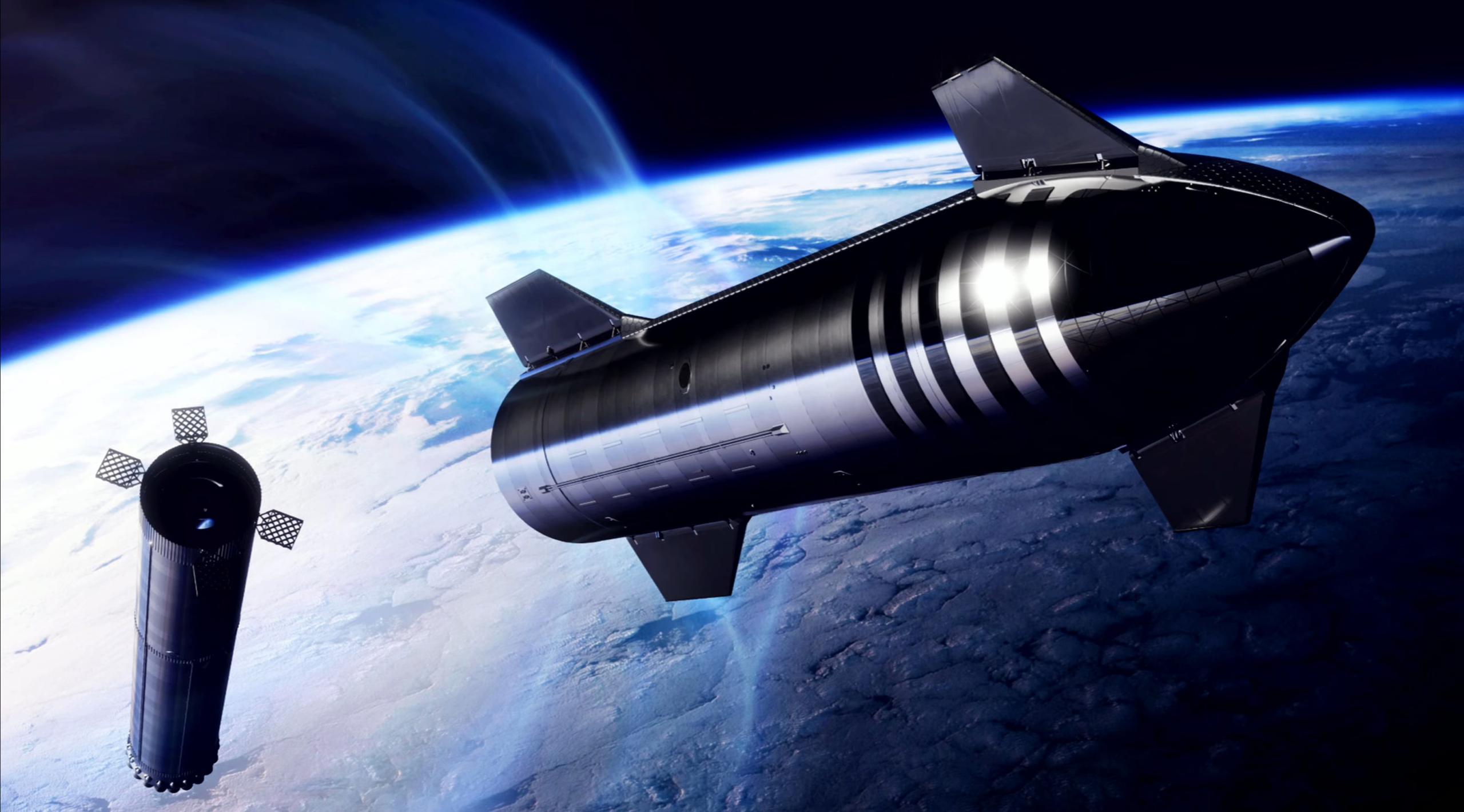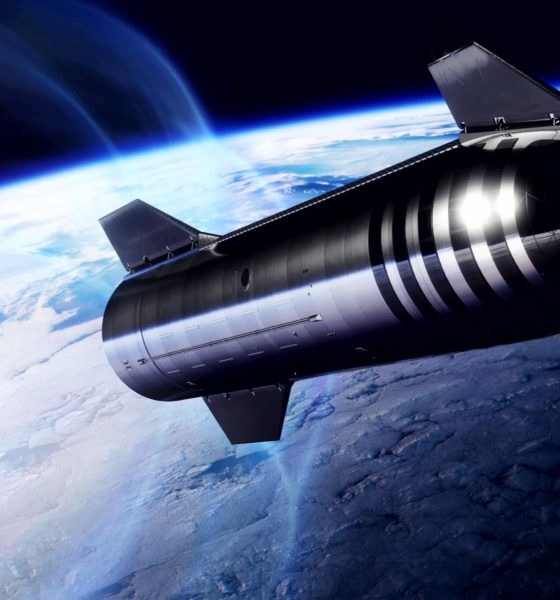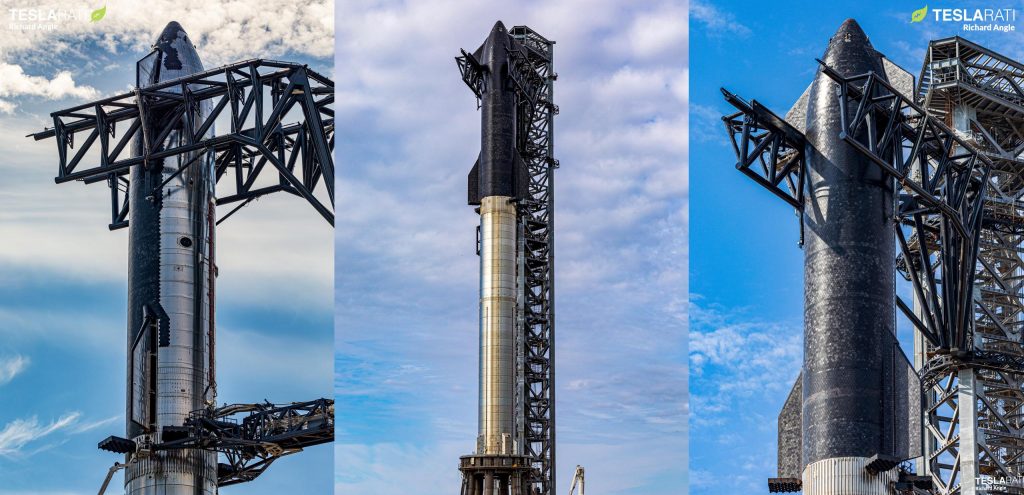

News
SpaceX CEO Elon Musk updates schedule for first orbital Starship launch
SpaceX CEO Elon Musk has presented the first significant update on the company’s Starship program since September 2019, offering a couple of new details about the status of the first orbital launch attempt of the largest and most powerful rocket ever built.
Unfortunately, above all else, the promised update was primarily a rehash of the broad-strokes vision of SpaceX’s Starship and Mars programs, as well as some basic details – most already known – about the rocket, its Raptor engines, and how it will be operated. Nonetheless, a large portion of the event was dedicated to audience questions, some of which actually extracted some specific details from the SpaceX CEO. Perhaps the single most important news: a rough but updated schedule for Starship’s first orbital test flight.
To be clear, a great many questions remain unanswered. Months after Starbase’s first orbital tank farm reached some degree of completion, SpaceX has yet to fill four main liquid methane (LCH4) tanks with even an ounce of fuel. Over the same period, the farm’s five liquid oxygen and nitrogen (LOx/LN2) tanks have been filled with thousands of tons of propellant and coolant. Why is still entirely unclear, save for speculation that SpaceX ran afoul of rudimentary methane storage regulations and is ever so slowly rectifying those errors with modifications. Without so much as a partially operational tank farm, SpaceX will be unable to attempt an orbital Starship launch, let alone start the process of qualifying a Super Heavy booster for flight with wet dress rehearsals (WDRs) and static fire tests.
Musk also failed to confirm or offer an educated guess as to which Starship and Super Heavy booster will support the first orbital test flight (OTF), whether the first OTF will truly reach orbit (rather than ‘just’ orbital velocity), and what will happen to Ship 20 and Booster 4 if – as a great deal of speculation suggests – they’ve fallen out of favor. If they’re to be replaced, it’s also unclear why that is or how long it might take to qualify a new ship and booster given that Super Heavy B4, for example, has yet to attempt a single static fire test a full six months after it first reached its full height.

Nonetheless, largely thanks to questions asked by members of the media, Musk did offer some valuable insight into Starship’s first orbital-class test flight. The SpaceX CEO says that he believes the Federal Aviation Administration (FAA) could complete an environmental assessment of Starbase as early as March. In the same presentation, Musk stated that SpaceX would “hopefully [complete environmental reviews] a couple months.” A lack of environmental approval has been the single most important bottleneck of orbital Starbase launch operations for months. The FAA originally anticipated that those reviews would be complete by the end of 2021 but recently delayed the estimated date of completion to the end of February 2022. Another delay from February to March (or later) has been expected for weeks.
It’s unclear how seamless the whole process will be but SpaceX will also need to receive an FAA license for orbital Starship launches after clearing environmental reviews. That could take days, weeks, months, or even a year or more. If SpaceX doesn’t receive a Finding Of No Significant Impact (FONSI) on its Starbase environmental assessment (EA) and instead has to complete a far more extensive Environmental Impact Statement (EIS), Starbase could be stuck in bureaucratic gridlock well into 2023 or even 2024.
Thankfully, Musk is extremely confident in SpaceX’s alternatives. In the event that Starbase becomes indefinitely unusable, SpaceX has already received full environmental approval to launch Starship out of Kennedy Space Center Pad 39A. The company has already begun the process of assembling a Starship launch and catch tower offsite and Musk believes that a Pad 39A Starship launch site could be brought online in just 6-8 months if SpaceX refocuses all of its Starship resources onto Florida.

The CEO also says that SpaceX’s goal is to have the hardware needed for Starship’s first orbital test flight ready to launch around the same as regulatory approval is secured – “hopefully a couple months for both,” in Musk’s words. If Starship S20 and Booster 4 are still assigned to mission, that schedule is not difficult to believe. Starship has already completed virtually all of the ground testing needed to qualify it for flight, while – from the outside – Super Heavy has never looked more ready for static fire testing.
If SpaceX intends to use a different ship and booster, though, the company will have to cut the amount of time needed for final assembly and qualification testing by a factor of two or three relative to B4/S20. If the next ship and booster pair takes a similar amount of time as B4/S20, the hardware needed for Starship’s first orbital launch attempt might not be ready until August or September 2022. SpaceX will also need to build, test, qualify, and ship around three-dozen Raptor 2 engines, the production of which could singlehandedly take at least six or seven weeks at the current pace of production.
Ultimately, no matter where the cards currently in the air end up falling, it looks like SpaceX has an extremely busy – and hopefully fruitful – year of Starship development and testing ahead of it

Elon Musk
Elon Musk’s X will start using a Tesla-like software update strategy
The initiative seems designed to accelerate updates to the social media platform, while maintaining maximum transparency.

Elon Musk’s social media platform X will adopt a Tesla-esque approach to software updates for its algorithm.
The initiative seems designed to accelerate updates to the social media platform, while maintaining maximum transparency.
X’s updates to its updates
As per Musk in a post on X, the social media company will be making a new algorithm to determine what organic and advertising posts are recommended to users. These updates would then be repeated every four weeks.
“We will make the new 𝕏 algorithm, including all code used to determine what organic and advertising posts are recommended to users, open source in 7 days. This will be repeated every 4 weeks, with comprehensive developer notes, to help you understand what changed,” Musk wrote in his post.
The initiative somewhat mirrors Tesla’s over-the-air update model, where vehicle software is regularly refined and pushed to users with detailed release notes. This should allow users to better understand the details of X’s every update and foster a healthy feedback loop for the social media platform.
xAI and X
X, formerly Twitter, has been acquired by Elon Musk’s artificial intelligence startup, xAI last year. Since then, xAI has seen a rapid rise in valuation. Following the company’s the company’s upsized $20 billion Series E funding round, estimates now suggest that xAI is worth tens about $230 to $235 billion. That’s several times larger than Tesla when Elon Musk received his controversial 2018 CEO Performance Award.
As per xAI, the Series E funding round attracted a diverse group of investors, including Valor Equity Partners, Stepstone Group, Fidelity Management & Research Company, Qatar Investment Authority, MGX, and Baron Capital Group, among others. Strategic partners NVIDIA and Cisco Investments also continued support for building the world’s largest GPU clusters.
News
Tesla FSD Supervised wins MotorTrend’s Best Driver Assistance Award
The decision marks a notable reversal for the publication from prior years, with judges citing major real-world improvements that pushed Tesla’s latest FSD software ahead of every competing ADAS system.

Tesla’s Full Self-Driving (Supervised) system has been named the best driver-assistance technology on the market, earning top honors at the 2026 MotorTrend Best Tech Awards.
The decision marks a notable reversal for the publication from prior years, with judges citing major real-world improvements that pushed Tesla’s latest FSD software ahead of every competing ADAS system. And it wasn’t even close.
MotorTrend reverses course
MotorTrend awarded Tesla FSD (Supervised) its 2026 Best Tech Driver Assistance title after extensive testing of the latest v14 software. The publication acknowledged that it had previously criticized earlier versions of FSD for erratic behavior and near-miss incidents, ultimately favoring rivals such as GM’s Super Cruise in earlier evaluations.
According to MotorTrend, the newest iteration of FSD resolved many of those shortcomings. Testers said v14 showed far smoother behavior in complex urban scenarios, including unprotected left turns, traffic circles, emergency vehicles, and dense city streets. While the system still requires constant driver supervision, judges concluded that no other advanced driver-assistance system currently matches its breadth of capability.
Unlike rival systems that rely on combinations of cameras, radar, lidar, and mapped highways, Tesla’s FSD operates using a camera-only approach and is capable of driving on city streets, rural roads, and freeways. MotorTrend stated that pure utility, the ability to handle nearly all road types, ultimately separated FSD from competitors like Ford BlueCruise, GM Super Cruise, and BMW’s Highway Assistant.
High cost and high capability
MotorTrend also addressed FSD’s pricing, which remains significantly higher than rival systems. Tesla currently charges $8,000 for a one-time purchase or $99 per month for a subscription, compared with far lower upfront and subscription costs from other automakers. The publication noted that the premium is justified given FSD’s unmatched scope and continuous software evolution.
Safety remained a central focus of the evaluation. While testers reported collision-free operation over thousands of miles, they noted ongoing concerns around FSD’s configurable driving modes, including options that allow aggressive driving and speeds beyond posted limits. MotorTrend emphasized that, like all Level 2 systems, FSD still depends on a fully attentive human driver at all times.
Despite those caveats, the publication concluded that Tesla’s rapid software progress fundamentally reshaped the competitive landscape. For drivers seeking the most capable hands-on driver-assistance system available today, MotorTrend concluded Tesla FSD (Supervised) now stands alone at the top.
News
Elon Musk’s Grokipedia surges to 5.6M articles, almost 79% of English Wikipedia
The explosive growth marks a major milestone for the AI-powered online encyclopedia, which was launched by Elon Musk’s xAI just months ago.

Elon Musk’s Grokipedia has grown to an impressive 5,615,201 articles as of today, closing in on 79% of the English Wikipedia’s current total of 7,119,376 articles.
The explosive growth marks a major milestone for the AI-powered online encyclopedia, which was launched by Elon Musk’s xAI just months ago. Needless to say, it would only be a matter of time before Grokipedia exceeds English Wikipedia in sheer volume.
Grokipedia’s rapid growth
xAI’s vision for Grokipedia emphasizes neutrality, while Grok’s reasoning capabilities allow for fast drafting and fact-checking. When Elon Musk announced the initiative in late September 2025, he noted that Grokipedia would be an improvement to Wikipedia because it would be designed to avoid bias.
At the time, Musk noted that Grokipedia “is a necessary step towards the xAI goal of understanding the Universe.”
Grokipedia was launched in late October, and while xAI was careful to list it only as Version 0.1 at the time, the online encyclopedia immediately earned praise. Wikipedia co-founder Larry Sanger highlighted the project’s innovative approach, noting how it leverages AI to fill knowledge gaps and enable rapid updates. Netizens also observed how Grokipedia tends to present articles in a more objective manner compared to Wikipedia, which is edited by humans.
Elon Musk’s ambitious plans
With 5,615,201 total articles, Grokipedia has now grown to almost 79% of English Wikipedia’s article base. This is incredibly quick, though Grokipedia remains text-only for now. xAI, for its part, has now updated the online encyclopedia’s iteration to v0.2.
Elon Musk has shared bold ideas for Grokipedia, including sending a record of the entire knowledge base to space as part of xAI’s mission to preserve and expand human understanding. At some point, Musk stated that Grokipedia will be renamed to Encyclopedia Galactica, and it will be sent to the cosmos.
“When Grokipedia is good enough (long way to go), we will change the name to Encyclopedia Galactica. It will be an open source distillation of all knowledge, including audio, images and video. Join xAI to help build the sci-fi version of the Library of Alexandria!” Musk wrote, adding in a later post that “Copies will be etched in stone and sent to the Moon, Mars and beyond. This time, it will not be lost.”








